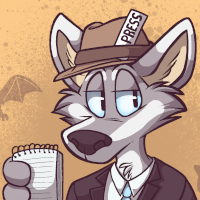Submitted by Fred Patten, Furry’s favorite historian and reviewer.
 The Book of Dust. Volume 1, La Belle Sauvage, by Philip Pullman. Illustrated by Chris Wormell.
The Book of Dust. Volume 1, La Belle Sauvage, by Philip Pullman. Illustrated by Chris Wormell.
NYC, Alfred A. Knopf, October 2017, hardcover, $22.99 (449 [+ 1] pages), Kindle $11.99.
The Book of Dust. Volume 1, La Belle Sauvage, by Philip Pullman. Illustrated by Chris Wormell.
London, Penguin Random House Children’s/David Fickling, October 2017, hardcover, £20.00 (560 pages), Kindle £9.99.
This is Pullman’s long-awaited followup to his multiple award-winning His Dark Materials trilogy. Its volume 1 is known as Northern Lights in Britain and was published in July 1995. It was retitled The Golden Compass in the U.S. and not published until March 1996. A little over twenty years later, both the American and British editions of The Book of Dust are published simultaneously and with the same title. Yet they are not physically identical. The two editions are typeset separately, with American and British spellings and terminology as appropriate, and the British edition is over a hundred pages longer. The American edition has almost none of the interior illustrations by Wormell, which are just chapter-heading drawings that are frankly not worth missing.
It is not a sequel. The main character in His Dark Materials is the young woman Lyra Belacqua and her dæmon Pantalaimon. Lyra is 11 and 12 years old, not yet an adolescent, and her dæmon can still take any male animal, bird, or insect form, which he does. At the conclusion of the trilogy Lyra becomes an adolescent, and Pan’s form is fixed as a talking pine marten. But The Book of Dust is Lyra’s story before His Dark Materials. In La Belle Sauvage she is only a baby.
They aren’t really talking-animal novels. The Book of Dust is set in that alternate Earth where everybody has a dæmon, a talking animal personification of their soul, accompanying them. The dæmon cannot stray too far from its person.
The protagonist of La Belle Sauvage is Malcolm Polstead, the potboy at his father’s inn on the shore of the River Thames at Oxford:
“Malcolm was the landlord’s son, an only child. He was eleven years old, with an inquisitive, kindly disposition, a stocky build, and ginger hair. He went to Ulvercote Elementary School a mile away, and he had friends enough, but he was happiest on his own, playing with his dæmon, Asta, in their canoe, on which Malcolm had painted the name LA BELLE SAUVAGE. […]
Like every child of an innkeeper, Malcolm had to work around the tavern, washing dishes and glasses, carrying plates of food or tankards of beer, retrieving them when they were empty. He took the work for granted. The only annoyance in his life was a girl called Alice, who helped with washing the dishes. Se was about sixteen, tall and skinny, with lank dark hair that she scraped back into an unflattering ponytail. […] He ignored that for a long time, but finally rat-formed Asta leapt at Alice’s scrawny jackdaw dæmon, knocking him into the washing-up water and then biting and biting the sodden creature till Alice screamed for pity. She complained bitterly to Malcolm’s mother, who said, ‘Serves you right. I got no sympathy for you. Keep your nasty mind to yourself.’” (p. 2)
Read the rest of this entry »
 Danger Money, by John Van Stry
Danger Money, by John Van Stry

 Guess how many furries there are in the world? I’d say at least the population of a medium-to-large city. That’s a lot of members to remember for the holidays. Santa Claws couldn’t deliver all the plushies and bones you need with just one trip on Christmas Eve. Of course instead of Christmas dinner, some of you might be having lox or falafel (or
Guess how many furries there are in the world? I’d say at least the population of a medium-to-large city. That’s a lot of members to remember for the holidays. Santa Claws couldn’t deliver all the plushies and bones you need with just one trip on Christmas Eve. Of course instead of Christmas dinner, some of you might be having lox or falafel (or 

 The Book of Dust. Volume 1, La Belle Sauvage, by Philip Pullman. Illustrated by Chris Wormell.
The Book of Dust. Volume 1, La Belle Sauvage, by Philip Pullman. Illustrated by Chris Wormell. Mark of the Tiger’s Stripe, by Joshua Yoder. Maps by the author.
Mark of the Tiger’s Stripe, by Joshua Yoder. Maps by the author.



